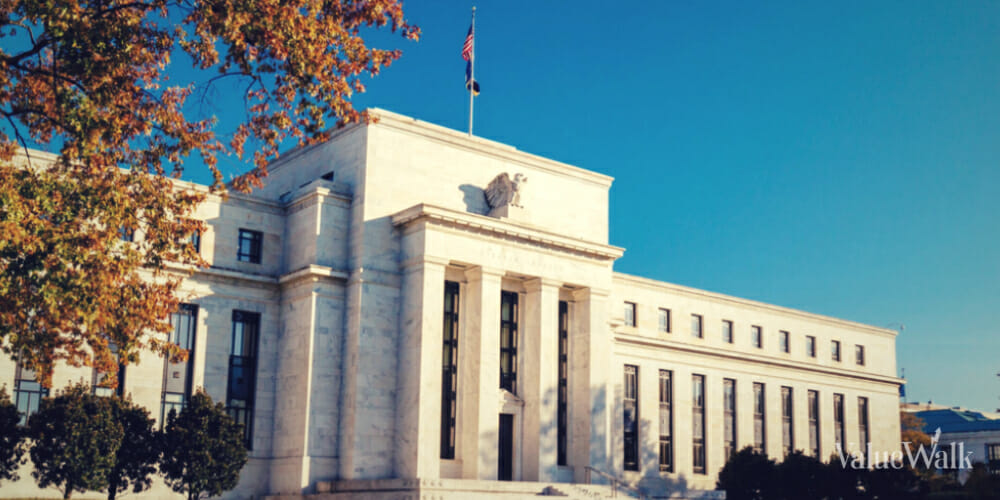It’s funny how a catch phrase can take hold on Wall Street so quickly. Last year, the watchword was “transitory,” referring to the elevated inflation rate. Then in the first half of 2023, the widespread commentary was all about “AI” this and “AI” that.
Now in the year’s final months, the phrase that pays is “higher for longer.” It’s an allusion to the Federal Reserve’s perceived plan to keep the federal funds rate near 5% for a while before finally cutting it back.
Oddly enough, the market adopted this phrase even though Fed Chairman Jerome Powell didn’t actually utter it. Rather, it’s investors’ and commentators’ collective interpretation of the Federal Open Market Committee’s (FOMC) intention to raise interest rates and/or hold rates steady until the “job” is done.
Will the Fed really hold interest rates higher for longer? It’s a pivotal question as, to rework a quote from the famous financier Stanley Druckenmiller, it’s central banks that move the markets, not corporate earnings. Let’s take a closer look at what Powell actually said and what he might or might not have in mind.
No relief until 2% inflation
Last month, the “higher for longer” buzz phrase spread like wildfire after the FOMC released its latest dot plot. Connecting the dots on the dot plot isn’t easy, but it did appear that some Fed officials were prepared to keep the federal funds rate elevated until at least 2026.
The dot plot also indicated that there would be no interest-rate cuts and that there would be at least one more rate hike in 2023. Yet, these dot-plot hints seem to have prompted divergent responses from the bond and equities markets. Bond yields have slowly but continually climbed while large-cap stocks have chopped around, but there’s been no sustained drawdown.
Perhaps stock investors didn’t believe the Fed, but the facts speak for themselves. The Consumer Price Index (CPI) increased 3.7% year over year in August and then again in September. Thus, it appears that inflation isn’t budging and remains above the Federal Reserve’s 2% inflation target.
Undeterred, some commentators refused to believe that the Fed would adhere to the dot plot’s indication of one more rate hike in 2023.
For example, economists with Capital Economics claimed, “Overall, there is nothing here that will convince Fed officials to hike rates at the next FOMC meeting,” referring to September’s inflation data.
In a similar vein, Seema Shah, chief global strategist at Principal Asset Management, called the September inflation report “reassuringly uneventful,” adding that there was nothing in the report “that should sway the Fed in one direction or the other.”
Still, it was disconcerting to see September’s core inflation, which excludes food and gasoline prices, increase 4.1% year over year. If Powell was looking for the persistently hot jobs market to cool down, he was undoubtedly disappointed in September as the U.S. economy added a whopping 336,000 jobs that month. That’s nearly double the 170,000 job additions that economists had expected for September.
Inflation is “still too high”
Some optimistic stock investors may have hoped for signs of leniency from Powell when he spoke to the Economic Club of New York on Oct. 19. Yet, there were few, if any, signals that the Fed chairman would hit the brakes on interest-rate hikes anytime soon.
First, Powell reaffirmed that the Federal Reserve would be “resolute” in its commitment to getting inflation down to 2%. One can only wonder how many times the Fed chairman will have to say this before equities investors believe him.
In addition, he hammered the point home with pronouncements like, “Inflation is still too high,” and, “Does it feel like policy is too tight right now? I would have to say no.”
In case that wasn’t enough, Powell declared, “Still, the record suggests that a sustainable return to our 2% inflation goal is likely to require a period of below-trend growth and some further softening in labor market conditions.”
It’s not hard to read between the lines here. Powell wants to see a cessation in jobs growth and an overall softening in economic activity before he will feel comfortable cutting interest rates. At least, that’s what I’m hearing from the Fed chairman’s statements.
On the other hand, maybe some hope-fueled stock traders read everything as, “The Fed still has your back.” After all, regardless of what’s actually been said, people will hear what they want to hear and do what they want to do.





